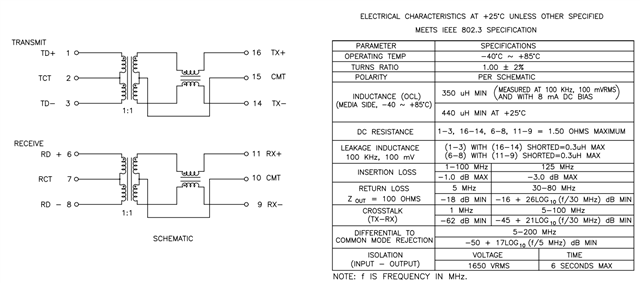Other Parts Discussed in Thread: THS6222, OPA2675
hello!
Can THS4520 be used to drive a 100Mbps Ethernet pulse transformer directly?
I checked the datasheet of THS4520, but it is not mentioned in typical applications. so I am unsure if it can drive inductive loads.
If it can do, what factors need to be considered in circuit design.
Thanks!

